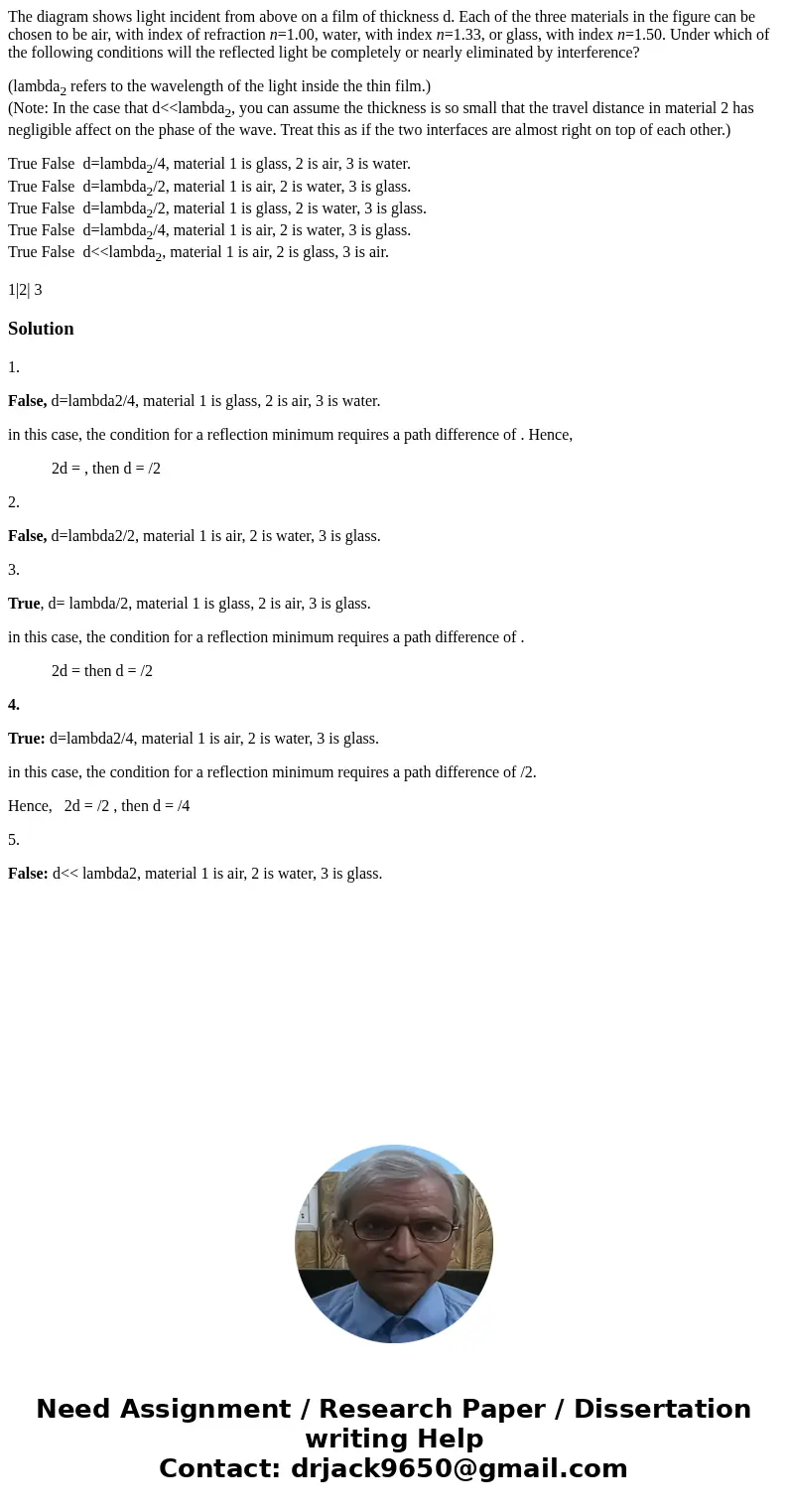The diagram shows light incident from above on a film of thi
The diagram shows light incident from above on a film of thickness d. Each of the three materials in the figure can be chosen to be air, with index of refraction n=1.00, water, with index n=1.33, or glass, with index n=1.50. Under which of the following conditions will the reflected light be completely or nearly eliminated by interference?
(lambda2 refers to the wavelength of the light inside the thin film.)
(Note: In the case that d<<lambda2, you can assume the thickness is so small that the travel distance in material 2 has negligible affect on the phase of the wave. Treat this as if the two interfaces are almost right on top of each other.)
True False d=lambda2/4, material 1 is glass, 2 is air, 3 is water.
True False d=lambda2/2, material 1 is air, 2 is water, 3 is glass.
True False d=lambda2/2, material 1 is glass, 2 is water, 3 is glass.
True False d=lambda2/4, material 1 is air, 2 is water, 3 is glass.
True False d<<lambda2, material 1 is air, 2 is glass, 3 is air.
Solution
1.
False, d=lambda2/4, material 1 is glass, 2 is air, 3 is water.
in this case, the condition for a reflection minimum requires a path difference of . Hence,
2d = , then d = /2
2.
False, d=lambda2/2, material 1 is air, 2 is water, 3 is glass.
3.
True, d= lambda/2, material 1 is glass, 2 is air, 3 is glass.
in this case, the condition for a reflection minimum requires a path difference of .
2d = then d = /2
4.
True: d=lambda2/4, material 1 is air, 2 is water, 3 is glass.
in this case, the condition for a reflection minimum requires a path difference of /2.
Hence, 2d = /2 , then d = /4
5.
False: d<< lambda2, material 1 is air, 2 is water, 3 is glass.

 Homework Sourse
Homework Sourse